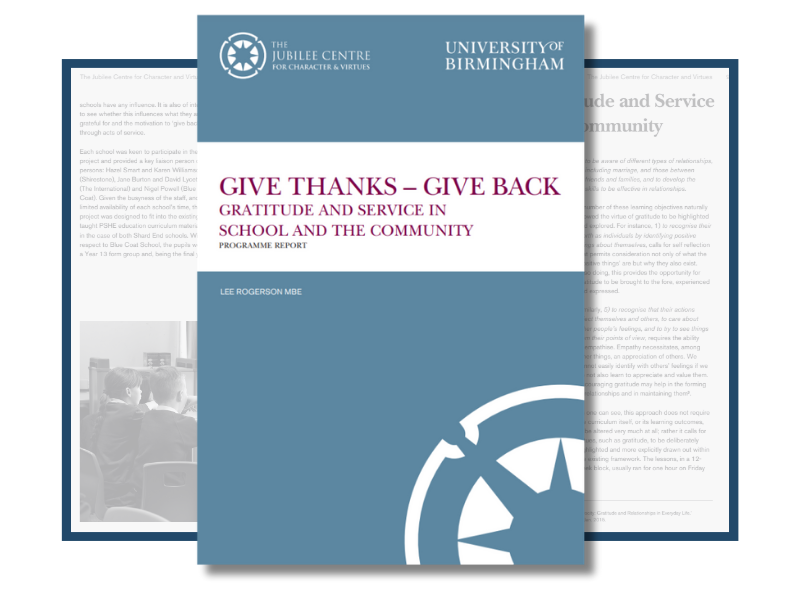Project Overview
The Give Thanks – Give Back project explored young people’s awareness and understanding of the virtue of gratitude and what things they are personally grateful for and why. It also explored creative ways young people can make a positive voluntary contribution by ‘giving back’ to their local community. This report details the findings of the project and provides recommendations for those who wish to further explore how young people ‘give thanks’ and ‘give back’, and ways in which this can be encouraged. Read more about the project and the community groups involved in the Give Thanks – Give Back: Exploring gratitude and Service Among Communities brochure here.

Summary of Key Findings
The findings of the project highlight that young people are grateful for a number of things, even if the term ‘gratitude’ is not confidently understood.
- People rather than possessions are deemed most important and many young people would be willing to help others less fortunate than themselves.
- There is a link between being thankful and giving back, although the idea of community is not conceptually well understood and its role in framing their lives not particularly clear. Those who do actively engage in their local community develop an appetite to do more.
Summary of Key Recommendations
The report makes the following recommendations:
- As the term ‘gratitude’ seems to have fallen out of vogue in today’s youth culture, careful consideration should be given to help reacquaint young people with the language of virtue as well as finding contemporary ways to contextualise it socially.
- Those working in schools should give serious consideration as to how virtues in general, and gratitude in particular, can be drawn out and highlighted from the existing teaching curriculum.
- Special attention should be paid to assisting young people to feel confident in articulating and communicating their sense of gratitude to others, especially their peers, and in helping them to develop clearer ideas of what a more grateful world (and community) looks like.
- Young people should be actively encouraged to engage with the local community at the earliest possible opportunity. Local authorities and community organisations should seek to support young people ‘giving back’ in ways that are meaningful, make a demonstrable impact, and provide future pathways that allow civic service to flourish.
